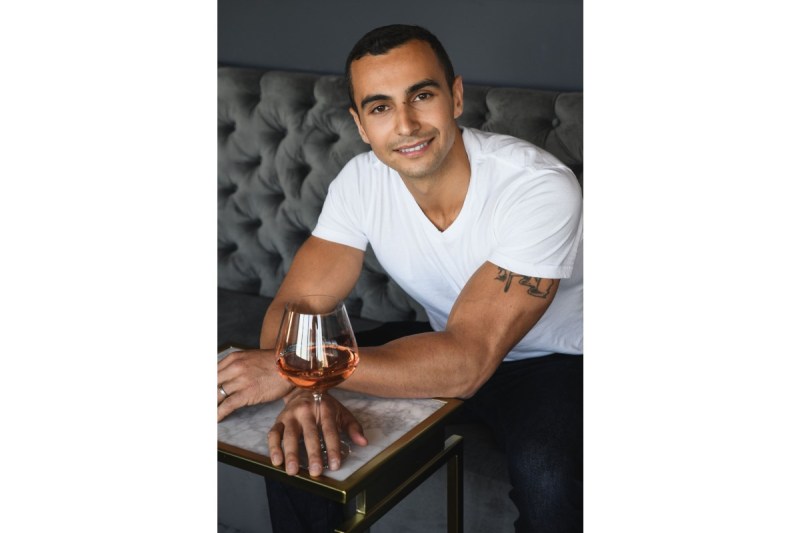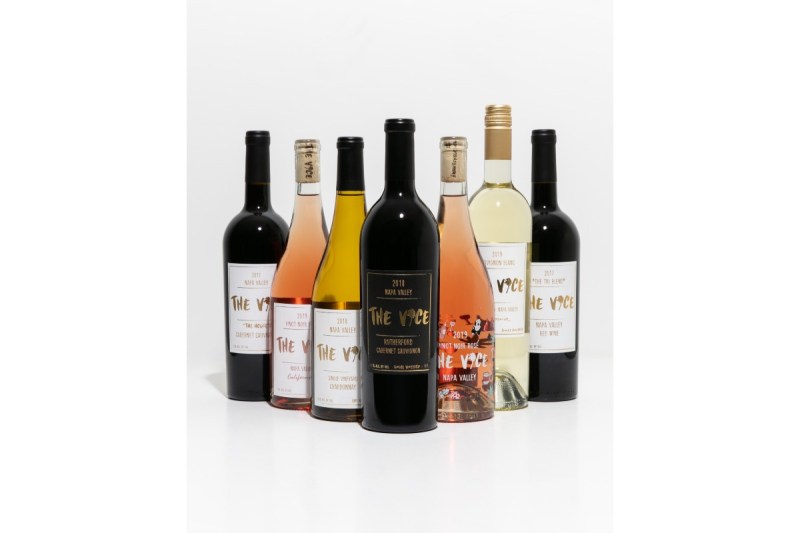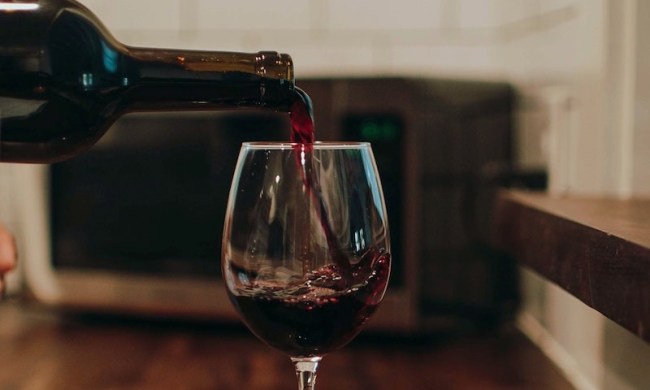Ever wonder how much global effort goes into a simple bottle of wine? In addition to the liquid inside, that glass has to be sourced from somewhere. When the Trump administration put tariffs on imports, this included an 18-percent duty on glass. And when the price of that glass goes up, so does the price of a bottle. Alongside the fallout from wildfires, a decades-long Western drought, pandemic-caused supply issues, and a dwindling cork supply, the wine industry faces a deluge of issues.
Malek Amrani, the founder of Napa Valley’s The Vice Wine, is no stranger to this turbulence. After founding the artisanal maker in 2016, Amrani is experiencing firsthand the supply chain, labor shortage, and inflation issues beleaguering vintners, and subsequent consumers. A spike in orders for Vice wines over the last two years is tempered by what the company reports is a 30% price increase on labels, corks, and capsules (the protective, over-the-cork sleeves on wine bottle necks).

As Amrani faces a year in which he might run out of wine or bottles to meet demand, The Manual had a chance to chat with the entrepreneur about dealing with an uncertain wine world. This wide-ranging conversation revealed the obstacles and the optimism critical to keeping California wine flowing.
(This interview has been edited for clarity.)
TM: It’s good to hear you guys are getting some rain. It’s been a pretty dry winter the last couple of months, right?
Malek Amrani: It’s barely raining. It’s spitting, and it’s the first time we’re getting any water from the sky this year. It hasn’t rained once. It’s been summer every day. Even that morning fog that we usually have has not been there.
TM: How does Vice participate in trying to help the environment (in Napa Valley)?
Malek Amrani: We support local Napa Valley charities. Back during the 2020 fires, they really helped the community.
We’re also looking into using paper bottles to reduce waste. This particular bottle here (Amrani holds up a bottle) is made in the U.K. It’s as pricey as glass, but so much cheaper to ship, and the carbon footprint is so much lower, but for us to use something like this, I have to consider, will the consumer want to buy premium wine in a paper bottle? We’re actively looking at how we can be more green.
Corks, we started using refurbished corks. It doesn’t save any money from regular cork, but it’s about being able to recycle.
TM: What is Vice Wines doing in order to counteract net profit margins shrinking?
Malek Amrani: I was one of the very first people to see the supply chain problems coming up. I started dealing with little supply chain issues in March, and I realized very quickly that this was going to become a serious issue. Right now, even my most optimistic suppliers are like, “See you in 2023.”
I’m trying to stock up on dry goods not only for the fact that I don’t think they’ll be there when I need them, but I also believe that we are in a super-inflation cycle. A dollar today put in boxes or put in cartons is going to buy me more than a dollar three months from now.
TM: How did the fires affect Vice’s choice of varietal grapes?
Malek Amrani: For the North Valley, in 2020, the contracts were canceled. So, as the fires were happening, I was proactive, driving around my pickup truck with a checkbook and overnight, picking up tonnage. From a taste perspective, there’s no smoke taint.
In agriculture, it’s a gamble. You may have a good run, but then there is a dry spell, and we are in that cycle now. 2020, overall quality was very good, but the volume was down significantly. 2021, the volume was down even more. And we don’t need to wait for harvest this year — we know it’s going to be a small vintage, so you’re going to have three years of back-to-back small production. It’s unfortunate because we are on fire. Year to date, we’re up a little bit over 40%. We’re way outpacing our own expectations. It’s a good problem to have, but we might run out of wine.
In the industry, wine consumption nationally is down for the first time in 26 years, but you really can’t look at all of it as one. You have to break it into two categories. A bottle of wine, under $12, I call it value. Value wine has been down now for many years. Then there’s premium wine, which is up significantly. So what we’ve seen is that people are drinking less, but they’re drinking better.
For us, we are in the perfect spot because we are the entry-level of the Napa Valley price point. If you want to compare (Napa) to the rest of the country, it’s the priciest wine in the United States. We are the entry-level of that super premium category of wine and that category is on fire.
Related Guides
- Best U.S. Winery Vacations
- Wine Terminology Guide
- Guide to Santa Barbara Wine
- A Guide to Biodynamic Wines
TM: How are your efforts in introducing this wine to other cultures?
Malek Amrani: We are already in South Korea and the Dominican Republic. We’ve been there for two years and South Korea is outpacing some local markets for us. We entered Japan a few months ago, and this is doing really well despite them not being back on premises (in the office). I think we’re going to crush it over there.
The reason why I went to the Dominican Republic and Korea is very simple. I looked up the top 10 wine importers of American wine and I said, “You know what? I’m not even gonna bother with one, two, or three. I’m going after four, five, and six.”
The Dominican Republic is the sixth importer of American wine by volume. Not only do they have a lot of resorts, but they act as an export hub to the Caribbean, so a lot of the islands buy from them. I’m honestly exceeding my expectations.
Another market that I want to export American wine to is Nigeria. Nigeria is the most populous country in Africa. There is a very strong upper and middle class in Nigeria. And they drink a lot of champagne, they drink a lot of luxury, and there isn’t an American brand (to my knowledge) that’s there. Myself, as an African (Amrani is from Morocco), I would love to export to at least a couple of African countries. When people think of Africa, they think poverty, but there’s a lot of wealth in Africa. Gabon, they have 1 million people and they’re one of the wealthiest countries. There is potential in Africa and I would love to export my wine there one day.

TM: Is there anything else you want to communicate to our readers?
Malek Amrani: Wine is purchased during three occasions and three only. You either buy it to consume it right away, either at home or at a restaurant. Two, you buy it to gift it. And three, you buy it to cellar it. When it comes to premium wine like Napa Valley, having two bad vintages, having demand continue to grow for premium wine, it’s a good idea for people to start cellaring wine because whatever you spend on it today, I guarantee you it’s gonna outpace the S&P 500 from a value perspective in the next two to three years.
If you like vintage, buy a case and sit on it. If you’re going to buy wine anyway, over time, just buy it now, and you’re saving money, especially if you have the incremental income to cellar wine. Not only is it a fun thing to do, it’s all about memories — it’s all about the experience.
Let’s say it’s your anniversary wine, your wedding wine, your divorce wine, your Friday night wine, or you really had a really good glass at lunch on a Tuesday. When you drink that wine again, subconsciously it’s going to put you in a good mood. It’s about the experience. If you enjoyed a wine with good times, buy it again.
A lot of people who cellar our wine don’t even end up drinking it. They get so attached to the bottle, they actually don’t open it. I’m one of them. I have so many bottles from 15 years ago that are definitely not good. If I open them, they’re past their peak, but I’m never going to. Every time I see that bottle, it brings me back to a certain time or a certain place, a certain era. And it gives me so many memories just by looking at the bottle.



